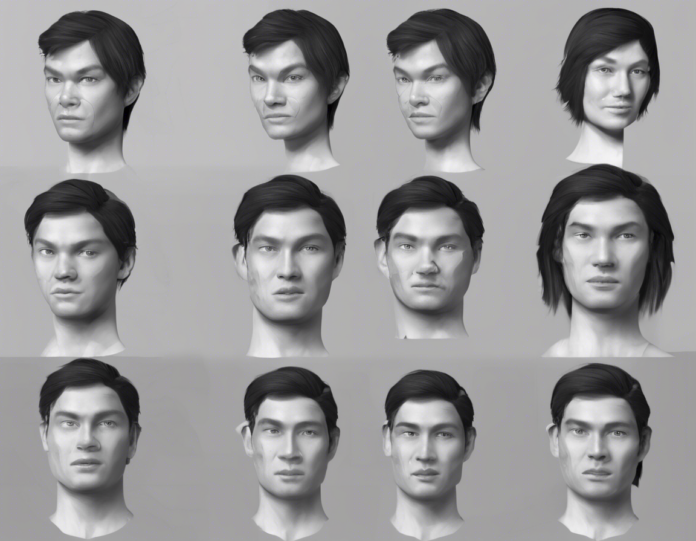Introduction
In the fast-paced digital world, face recognition technology has emerged as a cutting-edge innovation with widespread applications in various industries. From enhancing security measures to streamlining business processes, this advanced technology has gained significant traction in recent years. This comprehensive guide will delve into the intricacies of replicating faces using face recognition technology, exploring its mechanisms, benefits, challenges, and ethical considerations.
Understanding Face Recognition Technology
Face recognition technology, also known as facial recognition, is a biometric software application capable of identifying or verifying a person from a digital image or video frame. The technology employs facial features such as the distance between the eyes, nose, and mouth, as well as the shape and size of these elements, to create a facial template. This template is then compared against a database of known faces to determine a match.
Replicating Faces: The Process
The process of replicating faces using face recognition technology involves capturing a high-resolution image of an individual’s face. This image is then processed using sophisticated algorithms that extract and encode unique facial features. The encoded data is stored as a template for subsequent matching and identification.
Benefits of Replicating Faces
-
Enhanced Security: Replicating faces through facial recognition technology can bolster security measures in various settings, such as airports, border crossings, and high-security facilities.
-
Efficient Authentication: Face recognition offers a seamless and convenient method of authentication, eliminating the need for traditional passwords or access cards.
-
Personalized User Experience: By replicating faces, businesses can provide personalized services to customers, enhancing user experience and satisfaction.
-
Crime Prevention: Law enforcement agencies can leverage face recognition technology to identify suspects, prevent crimes, and enhance public safety.
Challenges and Limitations
While face recognition technology offers numerous benefits, it also poses several challenges and limitations:
-
Accuracy Concerns: Facial recognition systems may exhibit inaccuracies, especially when dealing with variations in lighting, angles, or facial expressions.
-
Privacy Issues: The widespread use of facial recognition raises concerns about data privacy, surveillance, and potential misuse of personal information.
-
Bias and Discrimination: Facial recognition algorithms have been criticized for exhibiting bias, leading to discriminatory outcomes, particularly against certain demographics.
-
Security Vulnerabilities: Like any digital technology, face recognition systems are susceptible to cybersecurity threats, including hacking and data breaches.
Ethical Considerations
The deployment of face recognition technology necessitates careful consideration of ethical implications:
-
Informed Consent: Individuals must be informed about the collection and use of their facial data, and their consent should be obtained before replication.
-
Transparency: Organizations utilizing facial recognition should be transparent about their practices, including data storage, sharing, and retention policies.
-
Accountability: Clear accountability mechanisms should be in place to address instances of misuse, data breaches, or algorithmic biases.
-
Regulatory Compliance: Compliance with data protection regulations and privacy laws is essential to ensure responsible use of facial recognition technology.
Frequently Asked Questions (FAQs)
-
How does face recognition technology work?
Face recognition technology works by analyzing facial features such as the distance between eyes, nose, and mouth, creating a unique facial template for identification. -
What are some common applications of face recognition technology?
Face recognition technology is used for security access control, surveillance systems, biometric authentication in smartphones, and law enforcement investigations. -
Can face recognition technology be fooled by facial masks or makeup?
While advanced algorithms can sometimes bypass facial disguises, certain techniques such as 3D masks or makeup patterns can still confuse facial recognition systems. -
What are the potential risks of using face recognition technology?
Risks associated with face recognition technology include privacy infringements, algorithmic biases, data breaches, and the potential for misuse by authoritarian regimes. -
How can businesses ensure the ethical use of face recognition technology?
Businesses can uphold ethical practices by obtaining informed consent, ensuring data transparency, promoting algorithmic fairness, and complying with relevant regulations.
In conclusion, the replication of faces through face recognition technology signifies a paradigm shift in identity verification and security measures. While the technology offers transformative benefits, it also necessitates a nuanced approach to address challenges, ethical considerations, and regulatory compliance. By navigating these complexities thoughtfully, organizations and society at large can harness the full potential of face recognition technology while safeguarding privacy, security, and fundamental rights.













